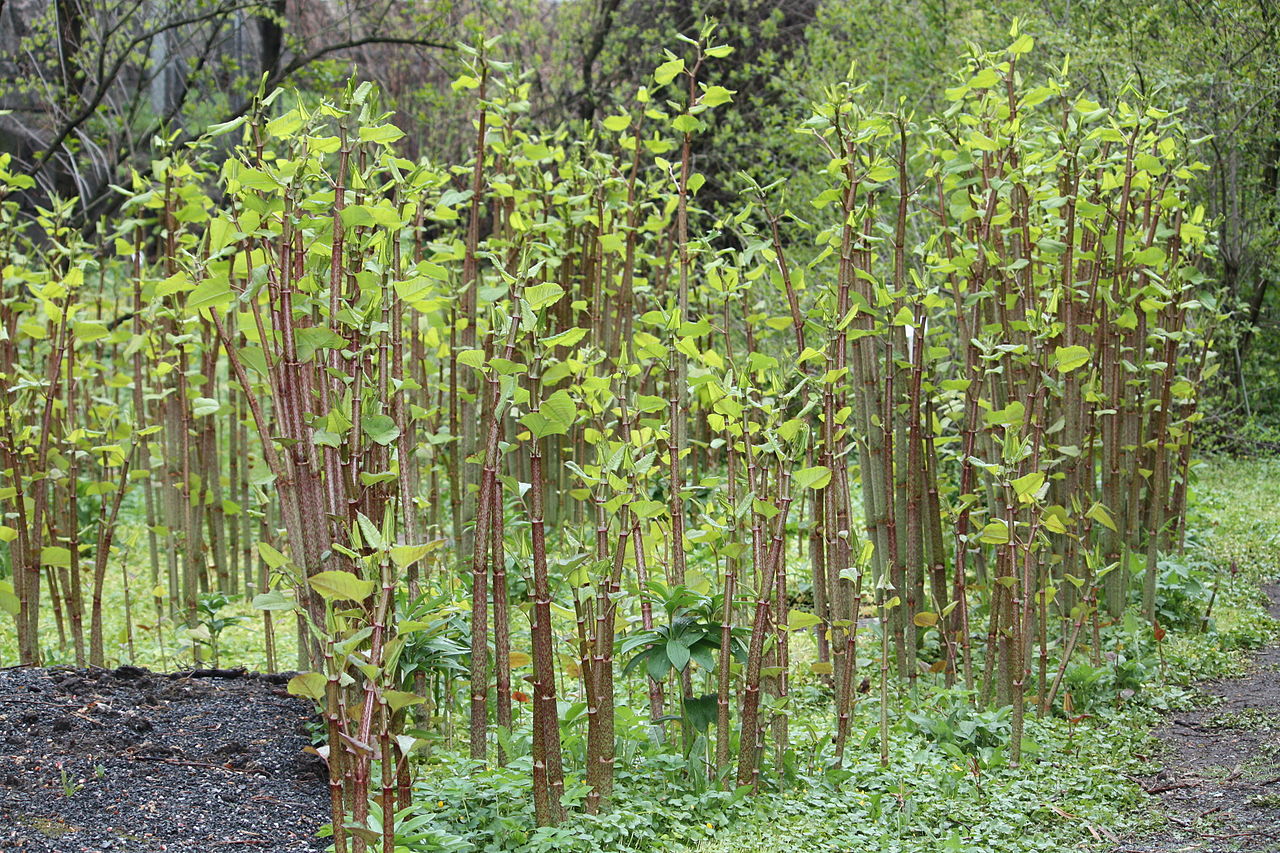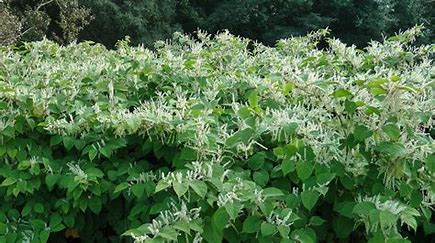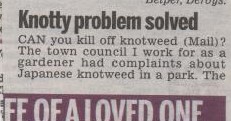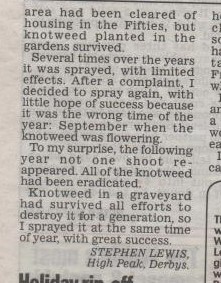As a professional gardener working for our town council we have had several complaints about Japanese knotweed growing in an area which was cleared of housing in the 1950's. No doubt it had been planted in gardens in the early 20th century and long survived the demolition. The area is now part of a publicly assessed riverside park. Over the years we had several times sprayed the knotweed with very limited success. Then after receiving a letter of complaint in late September 2015, about a large stand visible from a well used pathway, I decided with no particular hope of success to spray again, more to placate the complaint than in any hope of success. This was in early in September, the knotweed was flowering heavily and I knew would soon begin to die back. Conventional wisdom would suggest that September is far too late to spray to be of any real benefit. Nonetheless we sprayed using a knapsack sprayer containing Roundup Pro. After a few days the plants showed their usual resistance with a few leaves turning brown at the edges, but overall as expected they only showed a marginal effect. However, the next year not one shoot appeared, the whole stand was completely eradicated and this had been a thriving mature stand of well over fifty years old. Having learnt the lesson we have now used the same technique to wipe out a massive stand in a chapel graveyard we maintain, which had survived all efforts to destroy it for at least a generation, along with several other well established stands of the plant around the town.
I would advise anyone with a Knotweed problem to hold off spraying until autumn and if the plants are mature wait until they are in full flower, as this seems to be a good indicator that they are vulnerable, and then spray the plants with Roundup Pro ensuring every part of the plant is covered. I believe this method works because the plant itself, as it dies down for the winter, draws back the systemic weed killer into its own root system more effectively than any chemical alone can penetrate.
Fallopia japonica, synonyms Reynoutria japonica and Polygonum cuspidatum, commonly known as Asian knotweed or Japanese knotweed, is a large, herbaceous perennial plant of the knotweed and buckwheat family Polygonaceae. It is native to East Asia in Japan, China and Korea. In North America and Europe, the species has successfully established in numerous habitats and is classified as an invasive species.





 | 












